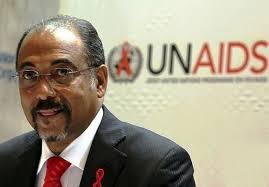By Haruna Gimba
The UNAIDS has released a new report showing that for the first time the scales have tipped as more than half of all people living with HIV (53%) now have access to HIV treatment and AIDS-related deaths have almost halved since 2005.
In 2016, 19.5 million of the 36.7 million people living with HIV had access to treatment, and AIDS-related deaths have fallen from 1.9 million in 2005 to 1 million in 2016. Provided that scale-up continues, this progress puts the world on track to reach the global target of 30 million people on treatment by 2020.
Executive Director of UNAIDS, Michel Sidibé, said the agency has met the 2015 target of 15 million people on treatment,” we are on track to double that number to 30 million and meet the 2020 target.
“We will continue to scale up to reach everyone in need and honour our commitment of leaving no one behind,” he said. The region showing the most progress is eastern and southern Africa, which has been most affected by HIV and which accounts for more than half of all people living with HIV.
It was reported that since 2010, AIDS-related deaths have declined by 42 per cent. New HIV infections have declined by 29%, including a 56% drop in new HIV infections among children over the same period, a remarkable achievement resulting from HIV treatment and prevention efforts that is putting eastern and southern Africa on track towards ending its AIDS epidemic.
The 90–90–90 targets are galvanizing global action and saving lives. Eastern and southern Africa leading the way in reducing new HIV infections by nearly 30 per cent since 2010.
Malawi, Mozambique, Uganda and Zimbabwe have reduced new HIV infection by nearly 40 per cent or more since 2010. Concerted efforts still needed for children, adolescents, men and key populations, and in certain regions.





